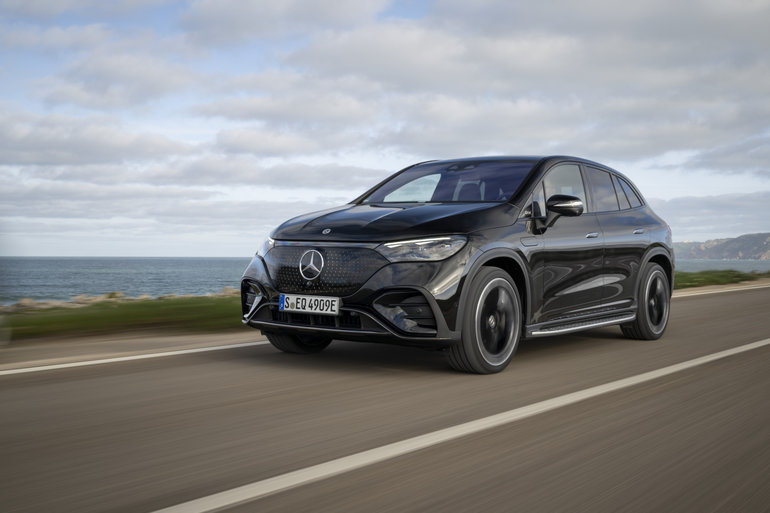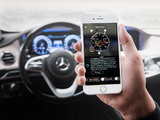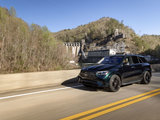How Does Your 2025 Mercedes-EQ Convert Braking into Battery Power?
April 16 2025,

Electric driving in a 2025 Mercedes-EQ vehicle offers a fundamentally different experience than conventional gas-powered cars, with regenerative braking being one of the most valuable technologies at your disposal. Rather than wearing down brake pads and converting momentum into wasted heat, your Mercedes-EQ regenerative braking system captures kinetic energy during deceleration and sends it back to the battery. This intelligent energy recuperation process can significantly extend your driving range and enhance the overall efficiency of your premium electric vehicle.
The advanced recuperation system in 2025 Mercedes-EQ models provides multiple options to suit your driving preferences and conditions. By understanding and optimizing these settings, you can maximize your vehicle's range while enjoying a smoother, more controlled driving experience. This technology transforms what was once wasted energy into useful power that extends your journey between charging sessions—a key advantage of Mercedes-EQ ownership.
How Mercedes-EQ Regenerative Braking Works
Unlike conventional braking systems that convert momentum into heat through friction, the regenerative braking technology in your 2025 Mercedes-EQ operates on a different principle. When you lift your foot from the accelerator or press the brake pedal, the electric motors that typically propel the vehicle switch roles and become generators. As the wheels turn these generators, they produce electricity that flows back into the high-voltage battery, effectively converting kinetic energy into stored electrical energy.
This energy conversion process happens almost instantly. The system captures up to 80% of the energy that would otherwise be lost during braking, contributing significantly to your vehicle's efficiency. In urban driving environments with frequent stops and starts, regenerative braking can add considerable range to your journey—sometimes extending your total range by up to 15% compared to driving without using recuperation effectively.
The beauty of this system lies in its seamless integration with the driving experience. The sensation of deceleration feels natural while simultaneously feeding energy back into your battery. With practice, many drivers develop techniques that maximize energy recovery without sacrificing driving comfort or control.
Understanding Mercedes-EQ Recuperation Levels
Your 2025 Mercedes-EQ offers multiple recuperation levels that provide different deceleration experiences and energy recovery rates. These options are easily accessible through steering wheel paddles or your central touchscreen, allowing you to adjust recuperation strength based on driving conditions and personal preference.
In D+ mode, your vehicle provides minimal recuperation, creating a driving experience similar to coasting in a conventional vehicle. This setting works well for highway driving where maintaining momentum is efficient. The standard D mode offers moderate recuperation that feels natural to most drivers while still capturing energy during deceleration. For maximum energy recovery, D- mode provides strong recuperation that can bring your vehicle to a complete stop without using the brake pedal—sometimes called "one-pedal driving." This setting excels in stop-and-go traffic and can significantly extend your range in urban environments.
Perhaps the most sophisticated option is D Auto, which uses the vehicle's radar sensors and navigation data to automatically adjust recuperation strength based on traffic flow, road conditions, and upcoming turns or intersections. The system can detect vehicles ahead and adjust recuperation accordingly, creating a smooth, efficient driving experience without requiring manual adjustments.
Optimizing Your Driving with Intelligent Recuperation
The intelligent recuperation system in your 2025 Mercedes-EQ is the pinnacle of electric driving efficiency. This radar-assisted technology continuously monitors the road ahead and adapts recuperation intensity accordingly. When approaching slower vehicles, the system increases recuperation to slow your vehicle while capturing more energy. When the road ahead is clear, it reduces recuperation to maintain momentum efficiently.
This smart system also works with your navigation system to anticipate upcoming turns, intersections, or changes in speed limits. For example, when approaching a lower speed zone, the vehicle will automatically increase recuperation to slow down while charging your battery. The system even recognizes downhill sections and maximizes energy recovery while maintaining your desired speed.
To get the most from this feature, ensure your navigation system is active even for familiar routes. This allows the vehicle to access topographical data and prepare for elevation changes. Additionally, maintaining adequate following distances gives the system more time to optimize recuperation based on traffic flow, resulting in smoother deceleration and improved energy recovery.
Mastering the Art of Electric Efficiency
The regenerative braking system in your 2025 Mercedes-EQ is a fundamental shift in how vehicles manage energy. By understanding and actively using this technology, you're not just driving—you're participating in a more sustainable mobility approach that maximizes every kilowatt-hour of energy in your battery.
For personalized guidance on getting the most from your Mercedes-EQ's regenerative braking features, visit Mercedes-Benz Country Hills. Our specialists can demonstrate all recuperation modes and help you discover which settings work best for your daily drives, ensuring you enjoy the perfect balance of efficiency, range, and driving pleasure in your premium electric Mercedes-Benz.




